BOOK DISCUSSION GUIDE
By Julie Tetel Andresen
IN THIS GUIDE
DISCUSSION GUIDE
Sink your teeth into these ideas and questions!
- Before reading The Alpha’s Edge, where else have you encountered depictions of werewolves e.g. specific movies, television shows, and books?
- Pool your knowledge: how does popular culture typically present werewolves? For example:
- How do people become werewolves?
- What causes them to shift from one form to the other?
- Are they aware of their human self while in their wolf state, and vice versa?
- Can they control when and whether they shift, and is it an easy or difficult process?
- Are they generally comfortable with their two selves?
- Are they social, or do they live solitary lives?
- Wolf or human? As presented in The Alpha’s Edge, what would you say are the advantages and disadvantages of life as a wolf versus life as a human?
- What do you know about the biology and behavior of wolves in the wild, and how does it match up to the descriptions of wolf life and behavior as depicted in The Alpha’s Edge?
- Climate themes are present in The Alpha’s Edge, including references to pollution in 19th-century England and in Ulan Bator, and the involvement of the werewolf organization G4S in mitigating climate issues. Later, Egon refers to several significant environmental disasters and civil wars in which G4S was (or was not) called for assistance.
While The Alpha’s Edge is not a ‘cli-fi’ (climate fiction) story, how did you feel about this dimension of the novella? Have you ever imagined what animals might say about human impacts on the planet? What did the relationship between G4S and its clientele say to you about the large-scale impact of social unrest due to civil wars, and climate disasters? - As Egon is reading Bardulf’s report on G4S, he makes a few frustrated comments about werepanthers dragging their paws on carbon emission reduction limits. Did you see this as just feline-canine friction, or something more?
- What cli-fi books or werewolf-related books would you recommend?
- Upon his return to Hanover House, the normally in-control Egon is immediately assailed by a series of erotic images. He brushes those aside, but as he enters the bar, he is flummoxed to scent his mate and she’s not at all what he imagined his future mate might be. For one thing, she’s human. How did you feel about Egon’s initial reaction to Misti? How do you think you would you feel if you knew beyond any doubt that the person destined to be your life partner is suddenly there in front of you, and that they don’t match up at all with your imagined ideal?
- At that point in the novella, Egon has no idea why Misti, of all people, is his mate. Did you have any theories?
- Egon refers to himself as ‘my wolf’ and ‘my human.’ Does he see himself as a whole or fragmented being?
- We experience the encounters between Misti and Egon from each of their viewpoints. How did you feel about this approach, versus books written only from a particular character’s point of view?
- Misti feels Egon’s ‘animal magnetism,’ but in human terms. She also notices a puzzling shift in attitude among the customers after he ‘marks’ her. Was he right to do that?
- Egon is Misti’s boss, and she needs her job. As they begin to encounter one another in and outside the hotel, how is Misti reacting to Egon, and how would you feel if you were in her place? #MeToo has brought many workplace harassment issues to light. Have you known of similar situations? How is the situation in The Alpha’s Edge different – or is it?
- What were your initial impressions of Misti and Egon as individuals and as possible mates?
- Pyotr points out that Misti is doing a magnificent job of resisting Egon, and that human males sometimes court their females. Later, Egon reflects on the somewhat alien idea of ‘liking’ his mate. How does he react to these concepts?
- After the first ‘incident’ of a murder that might be werewolf baiting, Egon reflects on the history of were-human relations. Legends of shapeshifters persist around the world. In Europe, some tales portrayed werewolves as gentle and heroic, but most depicted monstrous, violent, tormented creatures. Men and women accused of being werewolves were tortured and put to death. Why did legends like these arise, and how has humanity evolved in its ability to accept ‘otherness’? How have people viewed wolves through history, and how are wolves and humans coexisting in the modern world?
- What were your early impressions of Misti’s brother Ian, and his unusualness? Misti says Ian’s ability as a ‘dog-whisperer’ led to rent-free accommodations, and that it was Ian who encouraged her to find a job at Hanover House. When Ian first sees Egon and races across the street, did you understand what was happening?
- At the Spaghetti House, Misti fights her attraction to Egon, asking him to back off because she needs her job and that his attentions could jeopardize it. How did you feel about her effort, his response, and the situation as seen from her point of view, and his?
- After the Spaghetti House lunch, Egon tells Misti and Ian that they are going to pick up Wulf and go to the park. “It’s the best I can do at the moment,” he says. What did Egon mean by that statement?
- Bardulf and Egon watch and discuss Ian as he meets Wulf for the first time, making Misti suddenly nervous. What is happening in this scene?
- At the park, Egon calmly demands the truth from Misti, and we learn about her background, Ian’s, and the life she has forged for them both. What makes Misti decide to trust him with her secrets? Do your impressions of her change at that point, and if so, how? What differences does Egon then see in Misti, and how do his feelings for her change? At this point, do we have a better idea why Misti is Egon’s destined mate?
- Egon’s ‘courtship’ of Misti culminates in a sexy afternoon back at Hanover House. While Misti says she knows all she needs to about Egon, he is unable to communicate a critical piece of information before a second murder calls him back to duty. If he had been able to tell her about being a werewolf, what do you think would have happened at that point?
- After the hotel tryst, Misti returns home with Ian, who has also been impacted by his stimulating afternoon inside the Hanover world. What has changed for him? Should Misti or Egon have foreseen the awakening that would lead to a crisis later that night after Misti returns to work?
- We learn more about Misti and Ian’s story as she prepares for work. “Evil finds evil, and good finds good,” she says, and “there’s a difference between educated and smart.” Do you agree? How do you feel about Misti’s actions, decisions, and care of Ian?
- That night, the bar is abuzz with talk of murder and werewolves. Given the power of social media, can you imagine 21st -century people like Mr. Radley accepting Werewolf Hunter’s assertion that a werewolf has committed these murders?
- Ian has disappeared, and Egon’s blood freezes when he discovers the names of Mr. Wilde’s dogs, Felan and Farkus, meaning “wolf’ in Irish and Hungarian, respectively. What connections fall into place for him at that point, spelling danger for Ian?
- In Chapter 12, we see the action through Misti’s eyes. How does she react and how do you feel about those reactions, as Ian and Egon reveal their wolf selves during the dangerous encounter with Mr. Wilde and the dogs?
- In the final chapter, Misti and Egon cover some ground rules that will govern their life together. How do you feel about their romance and future relationship, as the book ends? Would you ‘turn’ if you were Misti?
Meet the Pack
Julie is fascinated by weres – humans who must truly co-exist with their inner animals. Check out her blog ‘My Were World – Whys and Wherefores.’
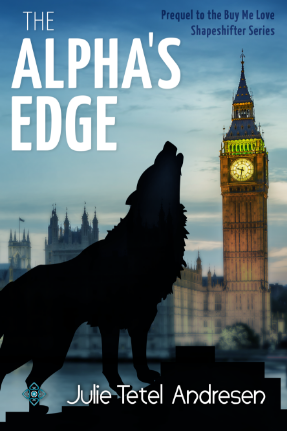
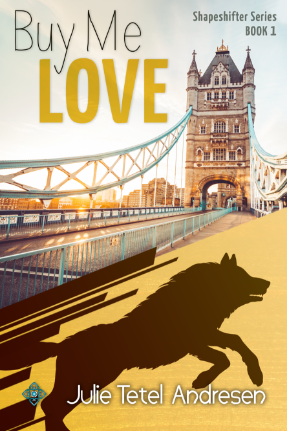
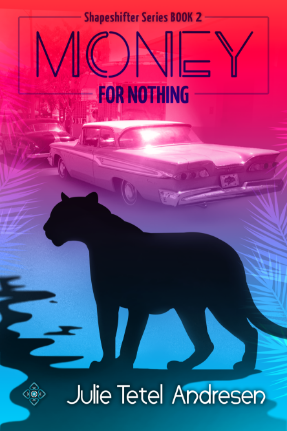
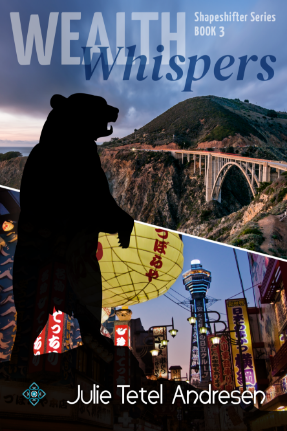
The Alpha’s Edge is the prequel to Buy Me Love, but Julie doesn’t confine her were interests to werewolves. Check out the werepanthers of Money for Nothing and watch for book three of Wealth Whispers, her shapeshifter trilogy - introducing werebears!
Werewolf legends and myths have persisted across cultures, time, and geography. Sightings are still reported today, fueled by popular culture and perhaps by misinterpreting the appearance and behavior of individuals with certain medical conditions. Learn more about the legends and history behind the werewolves of The Alpha’s Edge.
In her blog ‘My Were World – Whys and Wherefores,’ Julie refers to Janine Hatter’s essay “The werewolf and the Nineteenth-Century Ecogothic.” Hatter discusses an interesting connection between werewolves and nostalgia for the natural world that was disappearing with industrialization.
What do you know about wolves? Learn more about this fascinating animal at https://wolf.org/
Egon Hanover and his pack have kept their presence quiet throughout history. Wolves are generally thought to have been extinct in England since the 1500s, due to active hunting, trapping, and deforestation, but may have survived longer in Scotland before becoming extinct there as well. There is some interest in reintroduction.
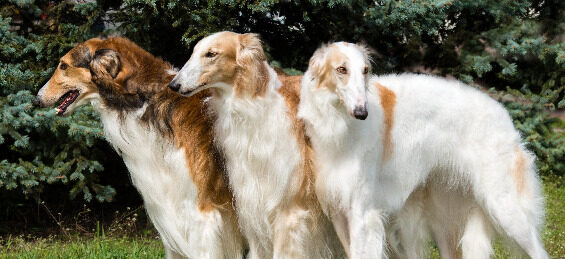
Egon’s dog Wulf is a Russian Wolfhound, or Borzoi. Read more about this unusual breed and its history.
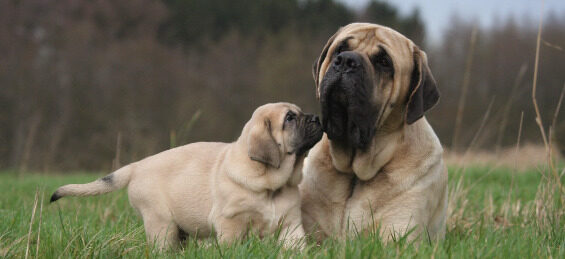
Felan and Farkus, Mr. Wilde’s dogs, are mastiffs.
Weretymology

Werewolf
“The word werewolf comes from the Old English word werwulf, a compound of wer ‘man’ and wulf ‘wolf.’”

Lycanthrope
synonym for werewolf; from the Greek for ‘wolf-human.’

Therianthropy
“the mythological ability of human beings to metamorphose into other animals by means of shapeshifting… The best-known form of therianthropy is found in stories of werewolves.”

ASK THE AUTHOR:
A CONVERSATION WITH JULIE TETEL ANDRESEN
Wolves are now a protected species in many parts of the world, having been hunted to near extinction. So, it seems that a species of any kind – plant or animal – has to become almost extinct for humans to say “Wait! Maybe losing this animal or plant isn’t a good thing.”
I don’t bring up this analogy lightly, but we have here a parallel with what we can call White Man’s understanding of Native Americans. It was only after the West was so-called won, that a re-evaluation of indigenous peoples as “wild savages” could begin. And now, in the face of a climate crisis, native wisdom for stewarding the land is desperately sought. Western scientists have come to realize, for instance, that the Inuit understand Arctic conditions better than anyone, and should be consulted before intervening. The same can be said for every ecosystem around the world.
I would like to think that mainstream society no longer discriminates against non-straight people, but there is always some group considered ‘other’ by another group. In my wereworld, the weres are those ‘others.’
I realize my actions will make zero difference. But, still, I can’t not try.
It only makes sense, then, that in my writing life I create characters who are actively trying to reverse the ravages of climate change. And who better than characters who are grounded in their animal selves?
Julie loves hearing from her readers! Connect with her through her website at www.julietetelandresen.com
If you're also into writing and yoga, check out Julie's IGTV series Vinyasa Writing!
The World of The Alpha’s Edge:
Habitats and Crime Scenes
Habitats
The story begins as Egon Hanover (Alpha) returns from a mission to Mongolia. He remarks on the beauty of the steppes but is less impressed with Mongolia’s capital, Ulaanbaatar, anglicized as Ulan Bator. Ulaanbaatar is the world’s coldest city. In winter, it is also one of its most polluted, due to its location in a mountain valley, which traps the smoke from coal-fueled power plants and from the stoves of residential gers, or yurts. See it on Google Earth.

The Alpha’s Edge is set in Bloomsbury, London. Here’s a look at this fascinating and iconic neighborhood.

Bloomsbury Garden Square, where Misti relates her backstory to Egon, is near the British Museum and is one of London’s earliest garden squares.

The hotel that inspired Hanover House!
https://www.grangehotels.com/hotels-london/grange-white-hall/

In The Alpha's Edge, the incomparable British Museum is Hanover House's neighbor. Enjoy some armchair museum-browsing!
https://www.britishmuseum.org/
The Regent’s Park is one of London’s eight Royal Parks. This 395-acre park was named after the Prince Regent who later became King George IV.

St. John’s Wood was once part of the Great Forest of Middlesex and is known for the presence of Abbey Road Studios!